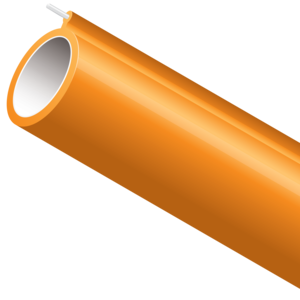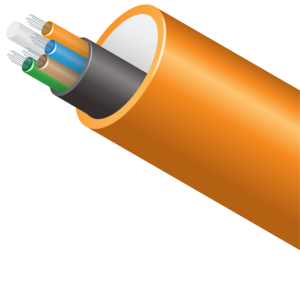As you move forward with your plans, one of the many questions you’ll grapple with is whether to direct-bury or place your cables into conduit. The protection conduit offers seems like a nice-to-have, but it's always cheaper to bury it directly, right? The answer might surprise you.
What are the advantages of using conduit vs. direct-buried cable?
Installation and maintenance
Direct-buried fiber needs metallic armor for protection and detection and must be grounded and bonded to safeguard against electrification. Conduit offers protection for fiber cables without adding the complexity, additional steps, and potentially extra cost of grounding and bonding armored cables and removing the armor when it’s time to terminate the cable.
Protection
There are 400,000 utility strikes across the US each year – many of them on fiber optic cables. Conduit provides an additional layer of protection for fiber optic cabling in the event of such an event.
Repairing a damaged fiber cable can range from $15,000 to $20,000 per incident for maintenance alone. The outage might also mean that operators have to pay out if they break service level agreements, should the cable not be repaired or replaced within a given timeframe.
Scalability
- After installation, upgrading direct-buried fiber generally requires getting more permits, opening up the ground and paying for more construction.
- By contrast, conduit creates space that helps you scale to future demand. Internet service providers can add new fiber to existing conduits to accommodate growth, leaving you with the option to add only what you need when you need it, or lease spare capacity to other operators or organizations.
MicroTechnology: Protection and Much More
MicroDucts are miniaturized conduits that provide permanent, protective pathways for fiber cables. They can be bundled together as FuturePath to provide multiple pathways under a single oversheath. Compared to standard ducts, MicroDucts and FuturePath:
- Allow more pathways in the same or even a smaller space, expanding the network faster than you expand the footprint.
- Are easier to route to distributed locations, helping get connectivity where it needs to go. This is key for FTTH and 5G networks.
- Are typically direct-buried, but also can be placed within existing ducts, to get more from the infrastructure you already have.
- Make it easy to upgrade. There’s no need to dig or secure additional permits to replace cables or add connections.
Take the Next Step Toward a Successful Build or Expansion
With Dura-Line in your corner, you’ll have the peace of mind that comes with our unmatched support and 50+ years as the industry leader in conduit solutions. Our nationwide team offers deep expertise in the latest conduit technology as well as the bigger picture of network design, product selection, workforce training, and more.





-x.png?version=1718024029)




